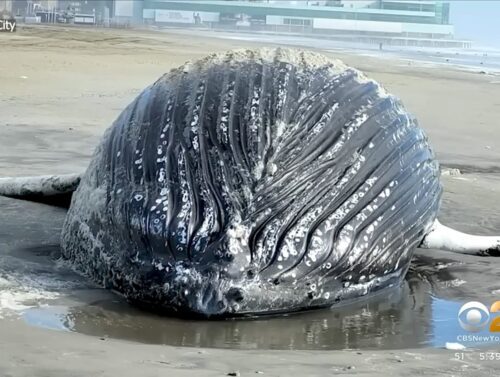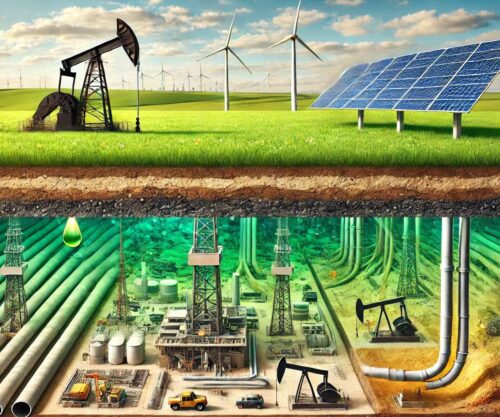
Questioning the Fundamental Basis of Climate Science and Policy
As an isotope geochemist, I’ve spent years studying the subtle signatures that reveal Earth’s hidden stories. Isotopes, variants of elements like carbon, act as chemical fingerprints, tracing the movement, age, and origin of materials through time. [emphasis, links added]
They don’t lie, and they don’t bend to narratives.
Early in my career, I was struck by the Suess Effect, a shift in atmospheric carbon isotopes that seemed to pin the rise in CO2 squarely on fossil fuel combustion.
The evidence was compelling: burning ancient coal and oil, devoid of radiocarbon (¹⁴C) and depleted in ¹³C, was diluting the atmosphere’s isotopic ratios. It didn’t make me fear catastrophic climate change, but it convinced me that humans were reshaping the atmosphere.
Now, I’m not so sure.
Recent discoveries and lingering contradictions suggest the story isn’t as clear-cut as we’ve been told.
At the heart of climate science lies a critical assumption: we fully understand the carbon cycle, the complex dance of carbon through air, oceans, plants, soils, and rocks.
This assumption underpins every climate model, policy, and trillion-dollar investment. But what if the foundation is shakier than we thought? What if nature is playing a larger role in rising CO2 than we’ve accounted for?
Let’s explore the cracks in this narrative and ask a critical question: Are we really responsible for the carbon in the atmosphere?
Cracks in the Foundation
The carbon cycle is Earth’s grand accounting system, tracking how carbon moves between vast reservoirs: the atmosphere (850 petagrams of carbon, PgC), oceans (38,000 PgC), soils, vegetation, and fossil fuels.
According to the IPCC’s Sixth Assessment Report (AR6, Working Group 1, Chapter 5), natural processes like photosynthesis, respiration, and ocean-atmosphere exchange shuffle hundreds of gigatons of carbon annually, orders of magnitude more than human activity, which adds roughly 9.5 PgC per year through fossil fuel combustion and land-use changes.
Figure 5.12 in the IPCC report illustrates this beautifully, with yellow arrows showing natural fluxes and pink arrows marking human contributions. The deep ocean alone holds 40 times more carbon than the atmosphere, and natural fluxes dwarf our emissions.

This isn’t to say human emissions are trivial. Even a small imbalance can tip the scales, gradually increasing atmospheric CO2. But the sheer scale of natural processes raises a question: How precisely do we understand these fluxes?
If our models miss even a fraction of nature’s contributions, the entire carbon budget, our estimate of sources and sinks, could be off. And with it, our confidence in attributing the CO2 rise solely to human activity.
The Isotope Fingerprint… and Its Smudge
The Suess Effect has long been climate science’s ace in the hole.
As fossil fuels burn, they release CO2 with no ¹⁴C (due to radioactive decay over millions of years) and less ¹³C than atmospheric CO2.
This dilutes the atmosphere’s isotopic ratios, a pattern observed since the Industrial Revolution. The IPCC cites this as definitive evidence that fossil fuels drive the CO2 increase, and I once agreed. The isotopic math seemed airtight.
But here’s the wrinkle: other natural sources can mimic this signature. Permafrost thawing in the Arctic releases ancient organic carbon, low in ¹⁴C and ¹³C. Petrogenic carbon from weathered sedimentary rocks does the same.
Deep ocean CO2, upwelled from centuries-old waters, carries a similar isotopic profile. These sources aren’t new, but their contributions are poorly quantified. If they’re larger than assumed, they could blur the line between “human” and “natural” CO2.
The Suess Effect remains strong evidence, but it’s not the unassailable fingerprint we once thought. Could we be overconfident in our attribution? (I discussed this in more detail in my article on the Suess Effect.)
Nature’s Lung Capacity… Bigger Than We Thought
Recent research deepens these doubts. A 2024 study in Nature Geoscience used carbonyl sulfide (COS), a chemical absorbed by plants, to estimate global photosynthesis. (You can read more about that in my critique here.)
The result? Terrestrial ecosystems are soaking up 31% more CO2 than previously modeled. This suggests land plants are a more powerful carbon sink than we realized, which could shrink the net human contribution to atmospheric CO2.
If our models underestimated this sink, what else have we missed?

Irrational Fear is written by climatologist Dr. Matthew Wielicki and is reader-supported. If you value what you have read here, please consider subscribing and supporting the work that goes into it.
Read rest at Irrational Fear



















Wielicki appears to be joining the CO2 does nothing bandwagon.
He will never be taken seriously again.
Atmospheric CO2 has been declining for billions of years.
Nature is a net CO2 absorber in the long run.
Only fools deny that reality.
Atmospheric CO2 has increased 50% since 1850 for one reason and only one reason.
Humans have added a lot of CO2 to the atmosphere and subtracted none.
Only fools deny that reality.
Based on this article, the author is one of them
Nothing like having someone who has no college degree related to climate sciences has the ability to state with certainty that a scientist with a PhD in a field that is part of climate science.
That’s just Ritard Greene… the guy who believes that “Every object emits radiation unless it is below absolute zero.” (his words). You read that right… he’s so unversed in thermodynamics that he believes that energy can flow willy-nilly without regard to the energy density gradient, and more importantly, he believes that objects can achieve “below absolute zero”.
He’s a demented old fossil, a leftist cosplaying as a conservative because he’s just off his nut enough to believe that attacking every single conservative he sees, as he buys into every warmist premise; argues from the warmist perspective; leaps to the defense of leftist woketards; bleats about ‘consensus’; denigrates bog-standard radiative physics, quantum physics and thermodynamics in favor of the warmist mathematical fraudery in their misuse of the Stefan-Boltzmann equation and reliance upon ancient and long-debunked scientific principles (Prevost principle); and attacks anyone smart enough to mathematically and scientifically prove the warmist blather is unscientific, is going to ‘trick’ conservatives over to his particularly idiotic brand of warmism (a rehash of AGW / CAGW).
He masks up as a climate realist while spewing warmist bilge. He masks up as a conservative while spewing leftist tripe. That’s why, with leftist warmists, one must look at their actions, not their words… because leftist warmists lie. It’s what he does. LOL
I haven’t seen you here in a reply to the total BS from the guy who doesn’t have a BS in science (MBA is what he’s got but not a science degree). I mostly have to bight my tongue and not reply but every time I ask him for his credentials when he attacks actual PhD scientists in the fields related to climate science but all I get are crickets. But he calls his website “HonestClimateScience.Blogspot.com”. Honest in what ways?